| � | The concept behind the "Cat Rangler" is simple. If you have a cat that needs to be kept out of certain areas in your house and still insists on going exploring when your back is turned, the Cat Rangler keeps him or her out. It is just a decorative towel with some jingle bells sewed (or glued) on. On the corners (purple dots) are magnets or Velcro tabs so you can stretch the towel across a doorway, or hang up any place you want the cat to train the cat not to go. It doesn't harm the cat in any way, but makes sure you will hear when the cat starts messing with the barrier and the bells start jangling. That's when you go and shoo the cat away from the forbidden area by clapping your hands and making a fuss. It's easy for a human to enter and exit a room baricaded with your Cat Rangler, but the cat will always give itself away by making a noise.I also get decorative jingle bells in the Dollar stores at Christmas time and hang several from door knobs so the cat can learn to ring them when it wants to go outside. The cat gets rewarded for ringing those doorbells by being petted and complimented for letting you know it wants to go out, as opposed to being scolded for ringing the Cat Rangler bells protecting forbidden areas. |
�
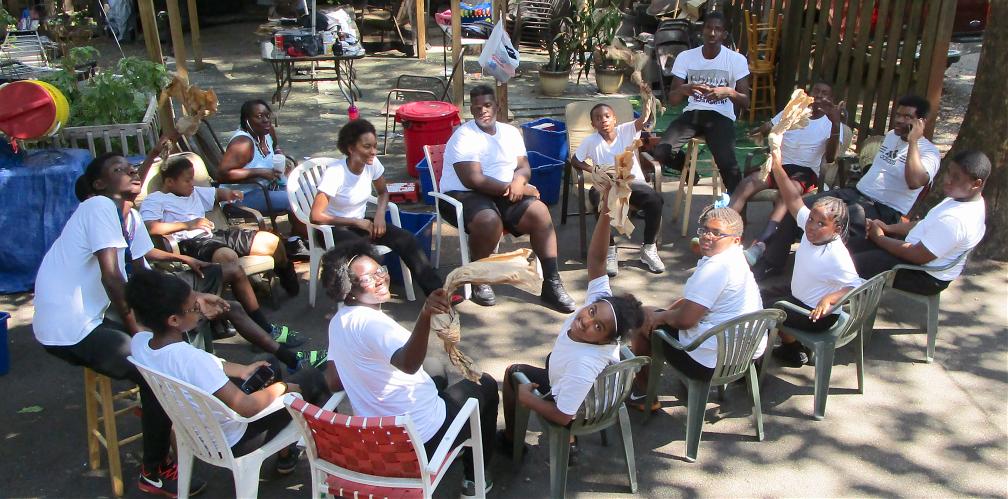
�
�
�
�
�
�
�
�
�
�
�
�
�
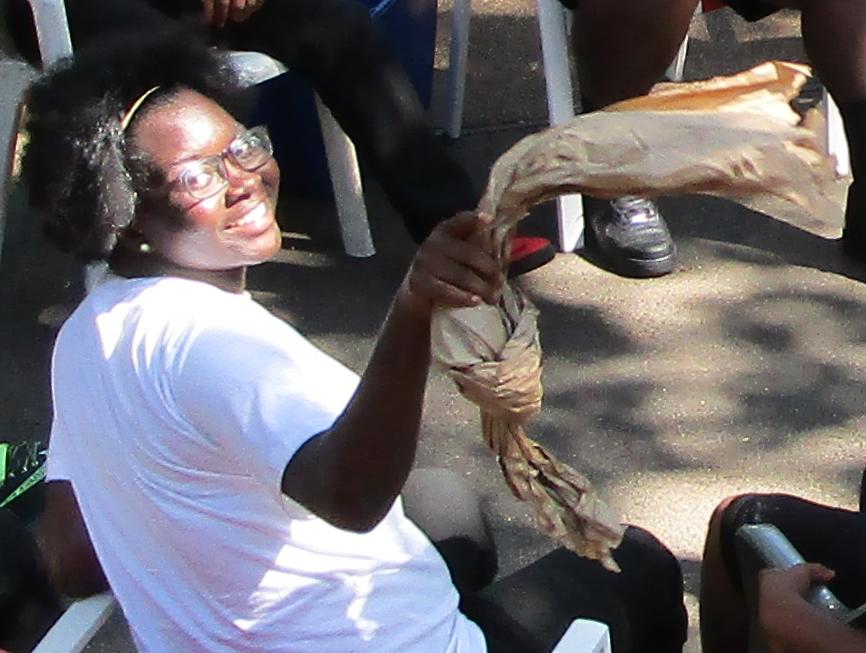

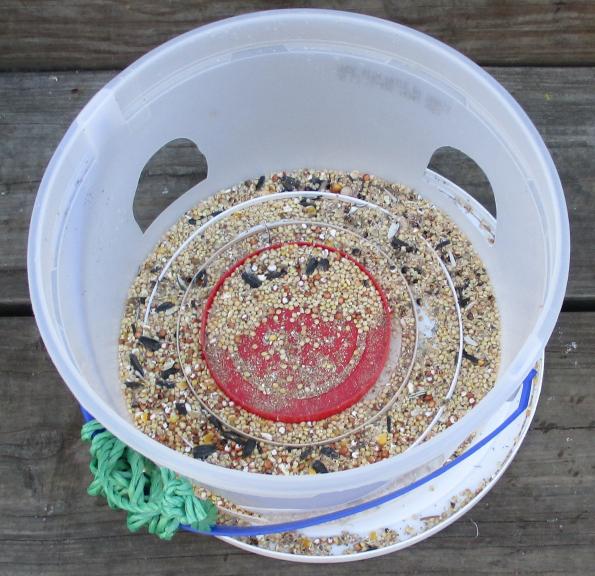
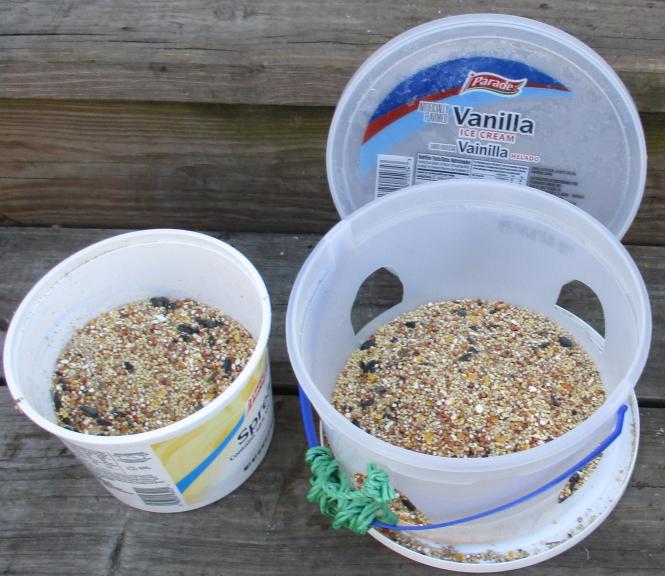

 |
The basic tower is built around a
stick.
|
| � | Just for fun, I am grouping four
tomato plants
|
| � | I will continue to add larger rings
to the top of
|
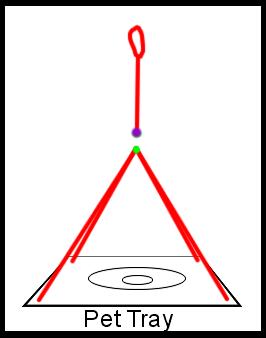 |
� | The pet dishes are placed on a small tray. I found some nice plastic ones at the local Dollar Store, but they could also be made of thin plywood and painted to make them easy to clean. Four holes are drilled in the four corners of the tray. Then four ropes (strings or shoelaces, etc.) are threaded through the four holes and meet together at a point well above the tray. How high is determined on how far down you can reach to raise and lower the tray. The central point of the four ropes is tied to a steel washer (shown in green). The steel washer is easily attracted to a strong magnet (the purple dot) tied or taped to another piece of rope or string. You only use this to get hold of the central point of four ropes and then detach the magnet. DO NOT try to lift the tray with the magnet. The other end of the magnet rope has a loop for hanging. |
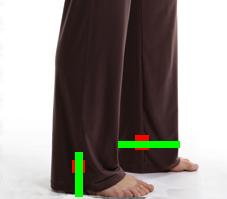 |
I call these Foot Fits. The small red square is a bit of "Hooky" Velcro, and the green rectangles are straps of wooly or fuzzy Velcro. I use the Velcro that sews on - no adhesives involved. You can get these from any sewing or fabric store or department. Sew a "Hooky" tab (red) on each side of the pant leg down close to the ankle. Take the fuzzy Velcro strap (green) and wear it either around your leg at the ankle (right) or down, under your foot, and up the other side (left). When going outdoors, I like to have the bottoms of my fleece pants down inside my boots, and the Velcro strap holds the bottom of the pants tight against my legs while in the boots. At night, I like to use the strap under my foot to keep the pants from riding up on my legs. Also, when I wear loose bed socks the straps keep my ankles and legs warm all night. Problem solved. |
�
It takes three blankets for the winter version, and two sheets and a blanket for the summer version.The top two sheets/ blankets are sewn together across the bottom edges. The third blanket (even in summer it is a light weight blanket, not a sheet) is "Z" folded beneath the top two sheet/blankets. The bottom edges are also sewn to the bottom edges of the two upper sheet/blankets.You have the option of sewing the side edges of the "Z" folded blanket to the edges of the sheet or blanket just above it (not the top sheet or blanket). |
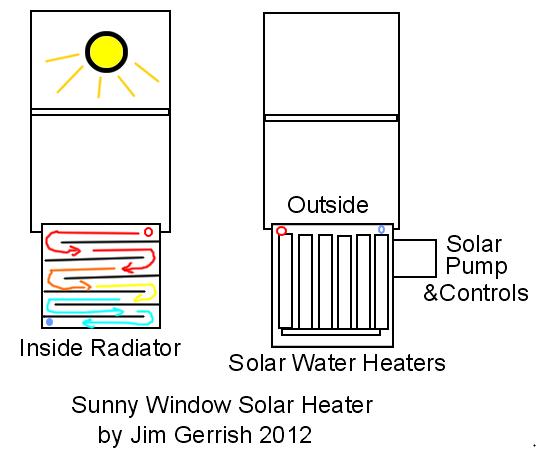
The Sun Rocket (a.k.a. Hot Water Rocket) , from Solutions From Science, is a solar water heater and thermos all in one. I was intrigued by it because it claimed to not just heat water, but to bring it to a boil. If it can do that, I reasoned, then it could "pasteurize" water from my rain barrels or a clear running stream and make it safe for drinking in an emergency. It makes no claims to filter water, but there are other products that do that job. Once the water has been filtered, it still needs to be boiled to rid it of every last living pathogen. This product does just that.I bought one ($40) to test it, and filled it with a bottle of spring water - already safe to drink. It held just one bottle, but that is enough to pour two cups of tea, coffee, instant soup, hot chocolate, or two bowl servings of instant cereal or Raman noodles.It took a couple of hours of sitting in direct sunlight to bring the water to a boil, but when I opened up the thermos (carefully!) the water inside was really boiling. The steam pressure is regulated by a valve at the top of the thermos so it won't explode. It was easy to face the Sunrocket directly into the sun simply by aligning it with its own shadow. It doesn't need to be constantly turned to face the sun because the side reflectors grab sunlight from any angle and direct it at the double-walled glass thermos inside.This is well worth adding to your emergency kit, or just take it along on picnics or camping trips. |
�
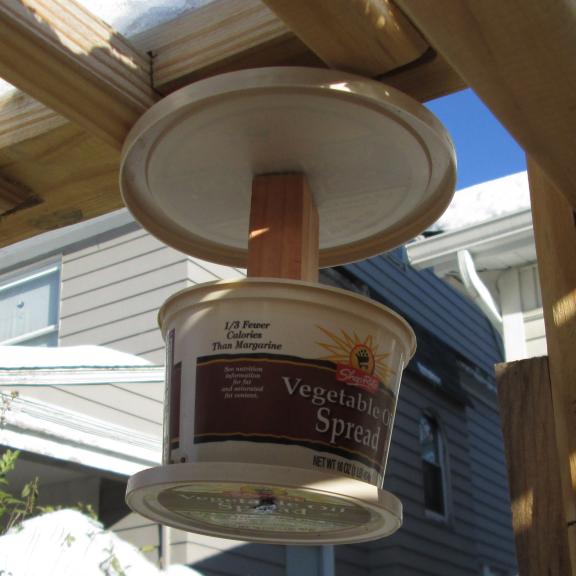 |
One of my ways of combating "cabin fever" during the ice and snow storms this winter, has been to work on projects designed to get me outdoors and back into my frozen garden. After looking on-line for some outdoor wild bird feeders and getting price shock, I dug around in my junk pile and came up with the "Margarine Tub Bird Feeder" which cost me about a half-hour of work.
|
Candle Heater / Low Watt Electric Heater
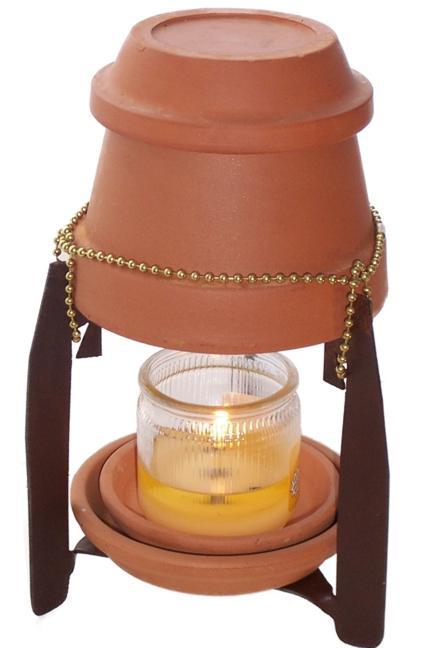
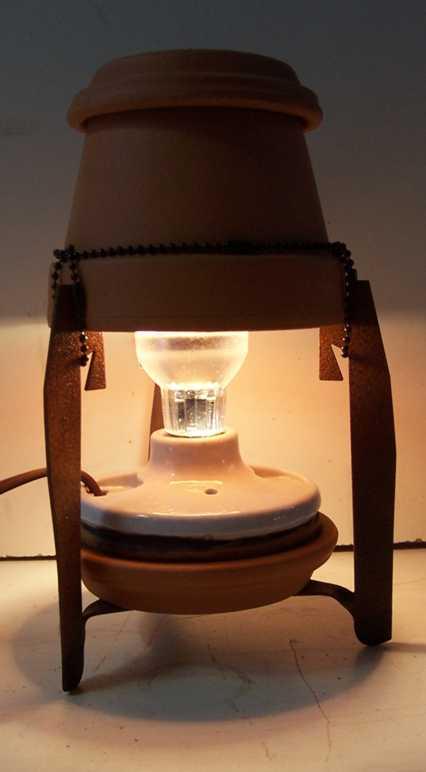
This is not my original idea, but it is a great home project that can provide additional heat at low cost, helping to reduce your electric bill if you use electricity to supplement your home heating.
The One-candle Flower-pot Furnace is described HERE.
The 60 watt Halogen Bulb Flower-pot Furnace is described HERE. Keep in mind that most electric heaters that you buy from stores use 500 to 1,000 watts or more.
You can buy either of the above ready-made OR you can learn how to make one yourself from the same Web site.

Available from Amazon.com as of 1/17/14 - http://www.amazon.com/Biedermann-Sons-H-350-Scandinavian-Christmas/dp/B000VUX5VK/ref=pd_sim_hg_2
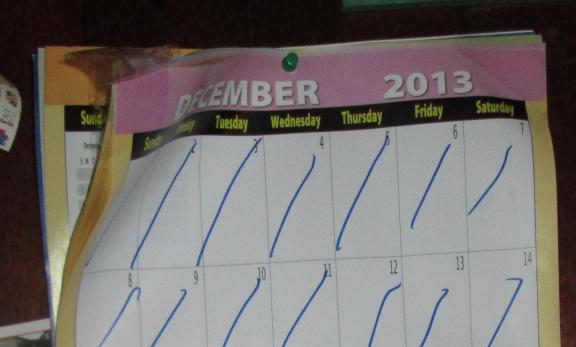
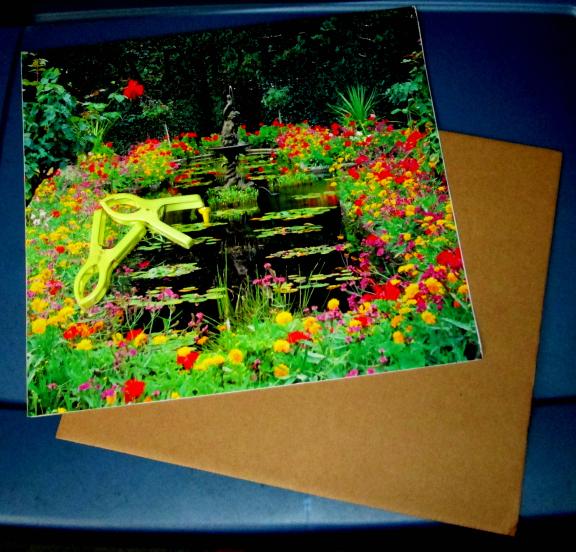
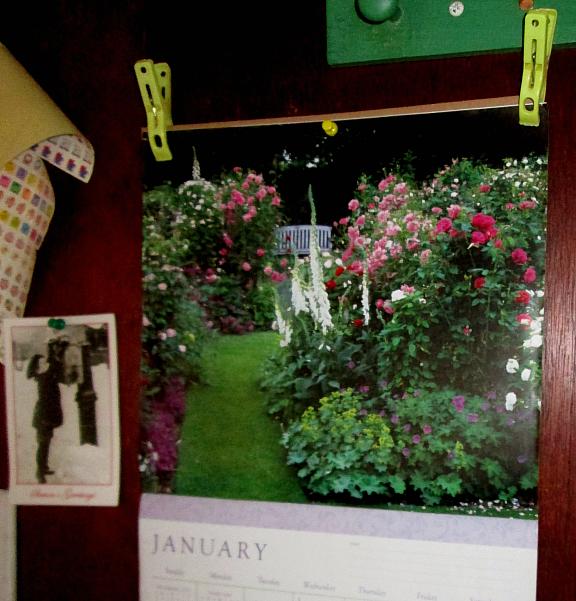
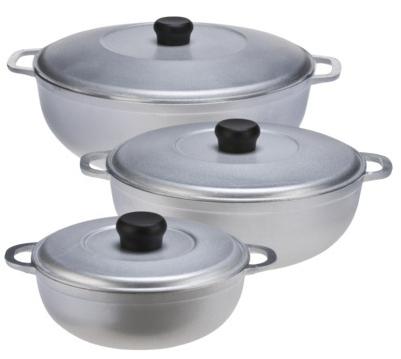 |
� | In the local Dollar Stores I found cast aluminum Calderos and immediately knew they would last a long time converted to barbecue grills. What's a Caldero? It's Spanish for "Cauldron" but it's better explained in photos like the one at the left. They come in different sizes, and are often sold as a set of three, but I only needed two for my purposes; a medium (13") and a small (12"). You may wish to get the large and the medium if you need more cooking space. |
| � | The largest Caldero is used to hold the charcoal. Save the lid and you can save money on charcoal by covering the Caldero to immediately extinguish the coals and use them a second or third time. The smaller Caldero is inverted and becomes the lid for your barbecue. I drilled a hole in the center of the smaller Caldero and screwed the lifting handle from the top into that hole so that I could easily lift off the top of my barbecue. A plastic handle might melt from the heat, but the handles on mine were solid metal. The Bar-B-Q sits on two bricks, keeping the heat well away from the tabletop. |
|
| � | I am cooking for one today, so I only need about 10 charcoal briquettes. I get the plain charcoal that has not been soaked in firestarter because I don't like the petroleum fumes either in the smoke or in my food. To start the charcoal, I use a small charcoal chimney available in most hardware stores or on-line. Crumpled balls of newspaper from left-over advertisements is all it needs to start the charcoal glowing within five minutes. |
|
| � | The small calderon used as a cover can get very hot during cooking, so use an oven mitt to lift it on and off the grill. I keep the 13 inch top of the larger calderon on the side to act as a heat resistant surface so I can put the hot top down on something to cool while I check on the food.I kept a 13" stainless steel grill that came with one of my rusted out barbecue cookers, but you can buy them separately on-line if you don't have one sitting around in your basement or garage. |
|
| � | I like the chunks of real cheese rather than the cheese food slices, so the lid helps to melt cheese on top of my hamburger. The cat is hoping I have cooked enough to spare him some meat with cheese. You can see it only took a few coals to cook for one person, but there is plenty of room to fill the bottom calderon to feed a lot of hungry people or cats. |
|
I call this an All-Year Bar-B-Q because it takes up so little space and I can use it on my open porch or deck to cook even in the dead of winter (never cook inside a closed space because of the carbon monoxide fumes!). When I have finished cooking, I put the 13 inch lid back on the 13 inch bottom calderon and it quickly extinguishes the coals from lack of oxygen. Later, when the coals have cooled, I can pluck them out of the ashes with tongs and use them over again the next time I want to Bar-B-Q. Maybe I'll add a few fresh coals, but waste not, want not. |
||
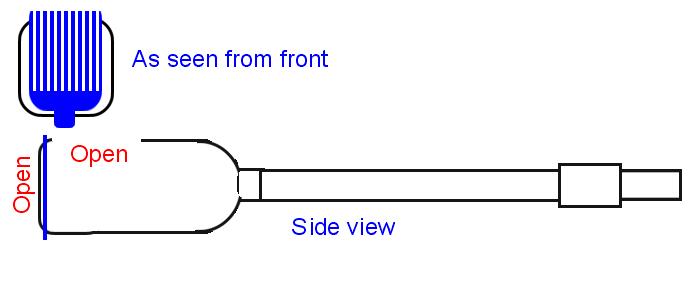
| Hair Pick, Juice Bottle, PVC Pipe | Hair Pick can pick off cherries. | Cut open the side and bottom of the juice bottle. |
| Cut a slot for pick handle to fit on
bottom |of juice bottle. |
Hot-glue pick along edges. | Hot-glue mouth of bottle to PVC Pipe. Wrap with Duct Tape. |
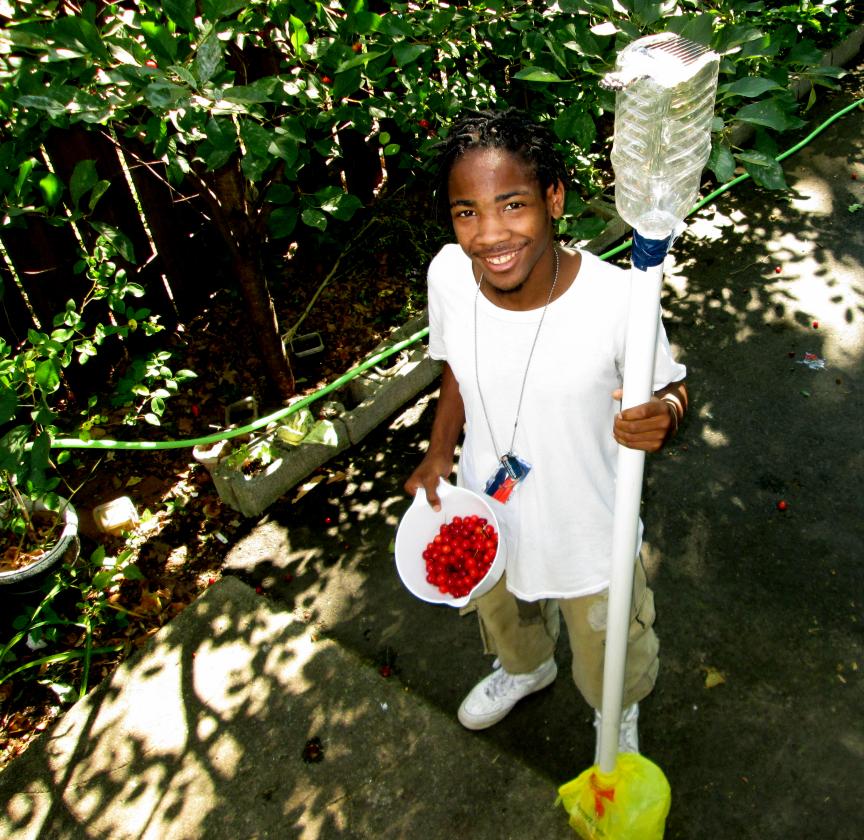
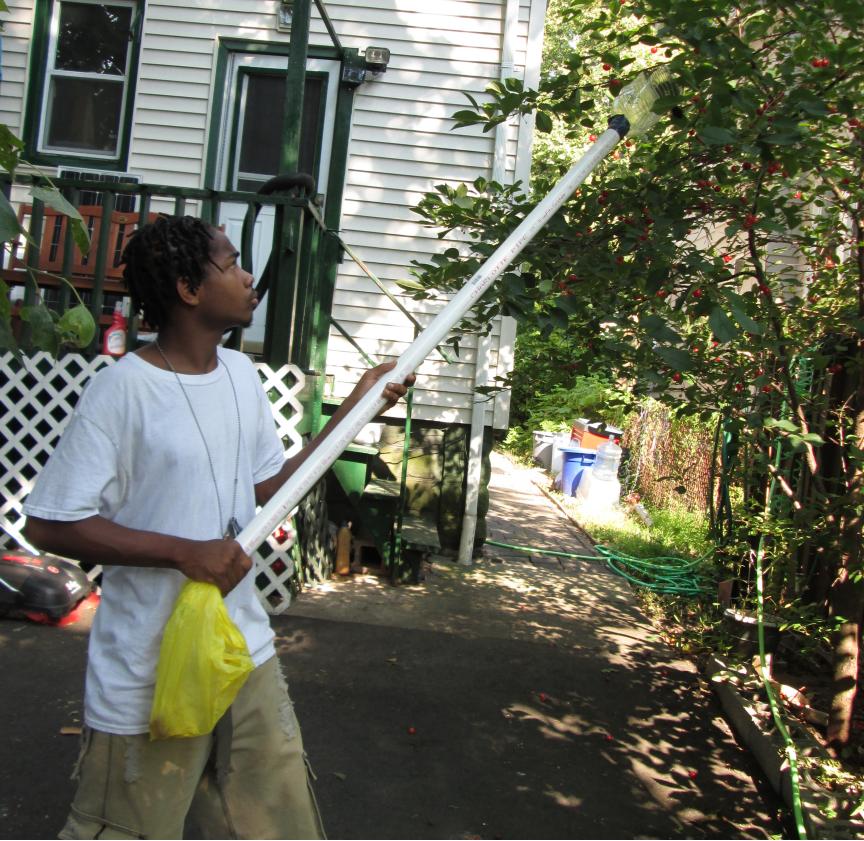
�
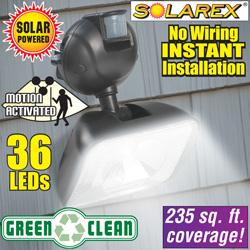 Indoor Outdoor Security Lights |
Security Lights aren't just to scare away would-be burglars. They help us seniors to get around a dark house at night, turning on as we enter a room and turning off by themselves. You can get these battery powered LED security lights from Heartland of America ( www.heartlandamerica.com ) for about $40.00. Most people would use them as outdoor security lights because that is how they are advertised, but they work just fine indoors, with the solar panel hanging outside your house in a sunny spot and the light hanging inside your house above a door in some dark area where you need some light to locate the regular wall switches or to climb up or down a short flight of steps. The 36 LED lights are very bright and they come on only at night when you need them most.For about $30.00 you can get a Solar LED Shed Light from Heartland of America, which has a pull chain instead of the security light automatic switch. But this light you can turn on and off yourself day or night just by pulling on the chain. Once again, it has a solar panel that stays outside in a sunny spot, while the chain-pulled light hangs indoors where you need the light. The main convenience with these lights is an easily installed (you don't need an electrician) light with no batteries to change...ever. |
�
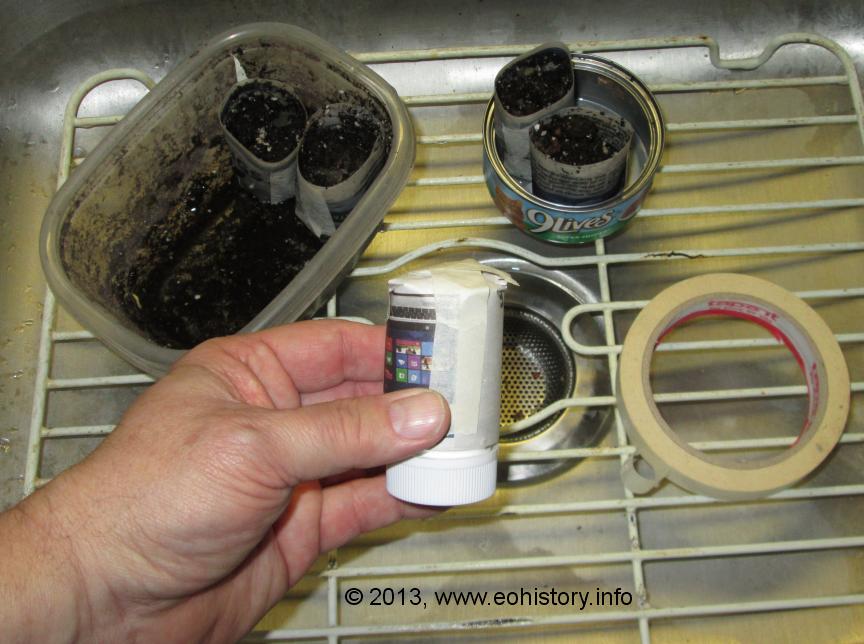 |
Seed Starter PotsWe'll begin with this idea since mid-winter is the best time time to begin planning ahead for spring plantings as soon as all danger of frost has passed.I use old newspaper advertisement "spam" mail that piles up in my recycling bin. I prefer to recycle it myself, shredding it for mulch, grinding it further and mixing it with garden dirt to make potting soil. In this case, I am using strips of newspaper torn from "Best Buy" sales ads that have expired. I wrap the strip around an aspirin bottle (or anything else about that size) and tape it on the side with cheap Dollar Store masking tape. Then smash down the bottom against the bottle and use two pieces of cheap tape to criss-cross and hold the bottom flat. Slide out the bottle and use the tube as a pot for starting seeds. I can fit two of these pots into a recycled cat-food can, or even more of them into a recycled plastic container that came with something from the grocery store which I can no longer remember eating. These pots are less expensive and work just as well as peat pots from the gardening centers.When the plants have outgrown the pot, it will probably be time to move them into the garden. You can plant the pot with the plant, or easily tear it free from the roots if you prefer. It's early March and I have already begun to germinate some seeds for my Earth Day "give-away." You can trade a bag of litter picked up off the streets of East Orange for a couple of my garden plants this year on April 22nd. |